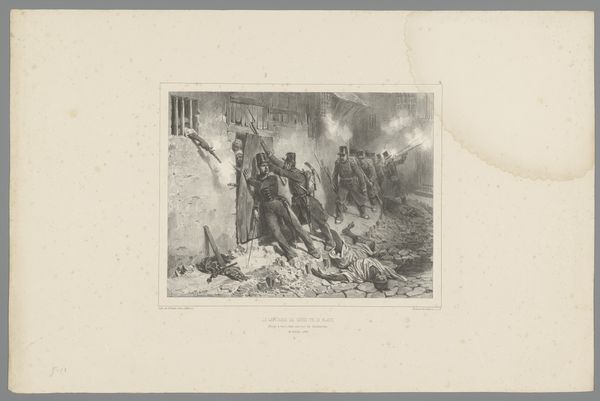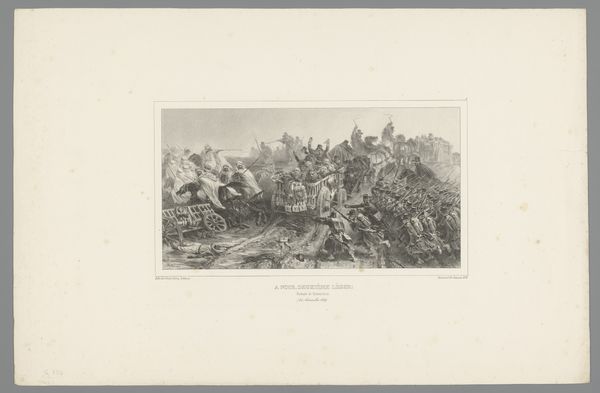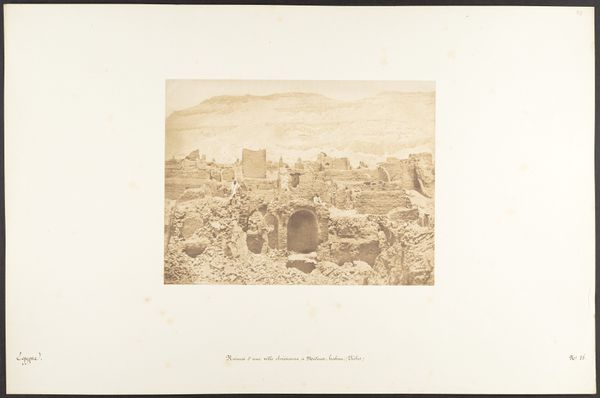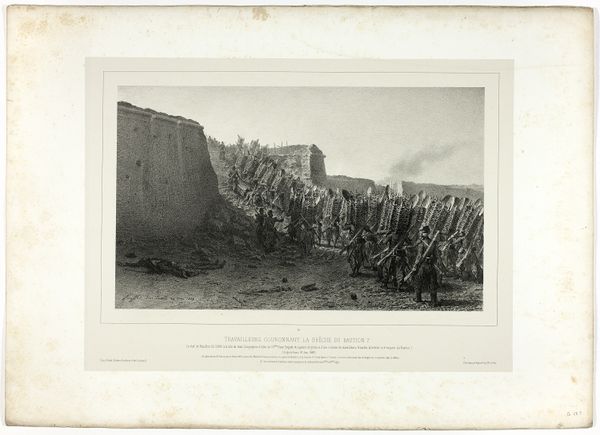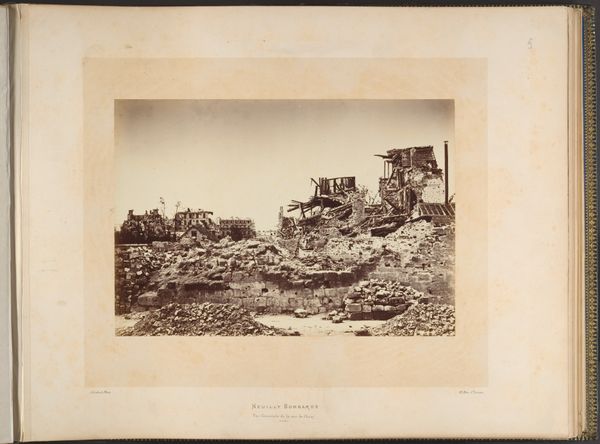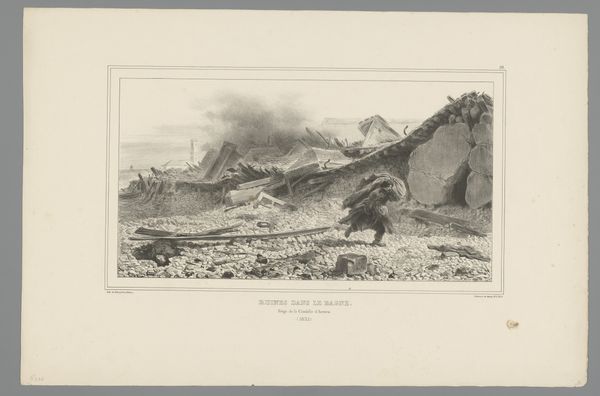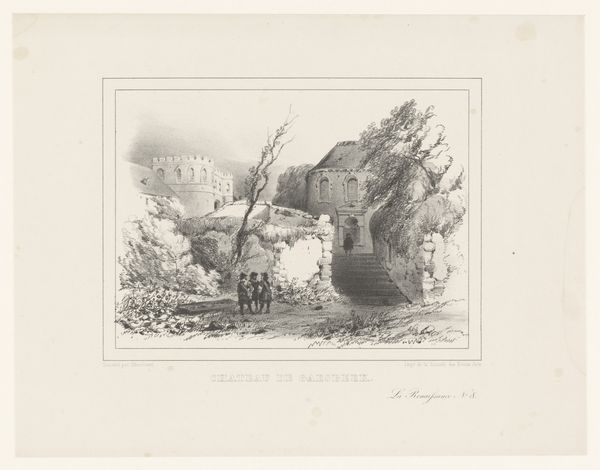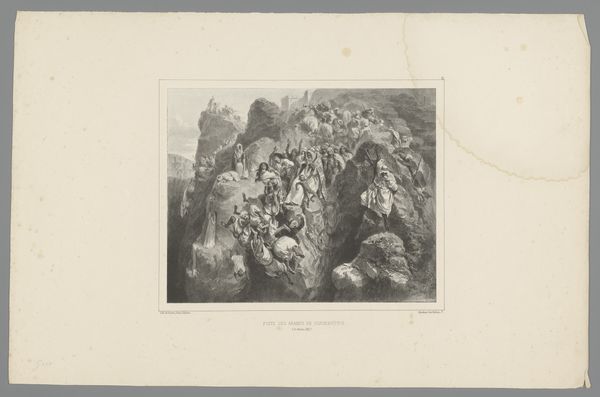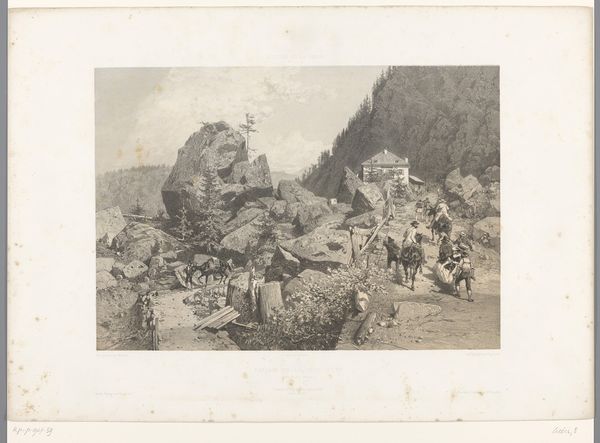
drawing, lithograph, print, etching, paper, engraving
#
drawing
#
narrative-art
#
lithograph
# print
#
etching
#
paper
#
history-painting
#
academic-art
#
engraving
Dimensions: 188 × 252 mm (image); 204 × 283 mm (primary support); 290 × 420 mm (secondary support)
Copyright: Public Domain
Horace Vernet made this print, Armé d'un fer sanglant, couvert d'un bouclier..., using etching and engraving techniques. These are processes of incising lines into a metal plate, applying ink, and then pressing the plate onto paper. The controlled application of these linear marks builds up the image, creating tone and texture. Here, Vernet uses these graphic processes to convey a dynamic scene of conflict, full of action and destruction. Look closely at the amount of detailed work involved in capturing the crumbling stonework, the figures of the soldiers, and the smoky atmosphere. The linear nature of etching and engraving lends itself well to depicting the hard edges of weapons and the textures of clothing. Prints like this one were made in multiples, which meant that images and ideas could be disseminated widely. In Vernet’s time, this was a crucial means of shaping public opinion and spreading narratives of military prowess. So, while the print medium might seem distant from the battlefield, it played its own role in the theatre of war. When you consider a work of art like this, remember that its materials, processes, and context are all deeply intertwined.
Comments
No comments
Be the first to comment and join the conversation on the ultimate creative platform.
